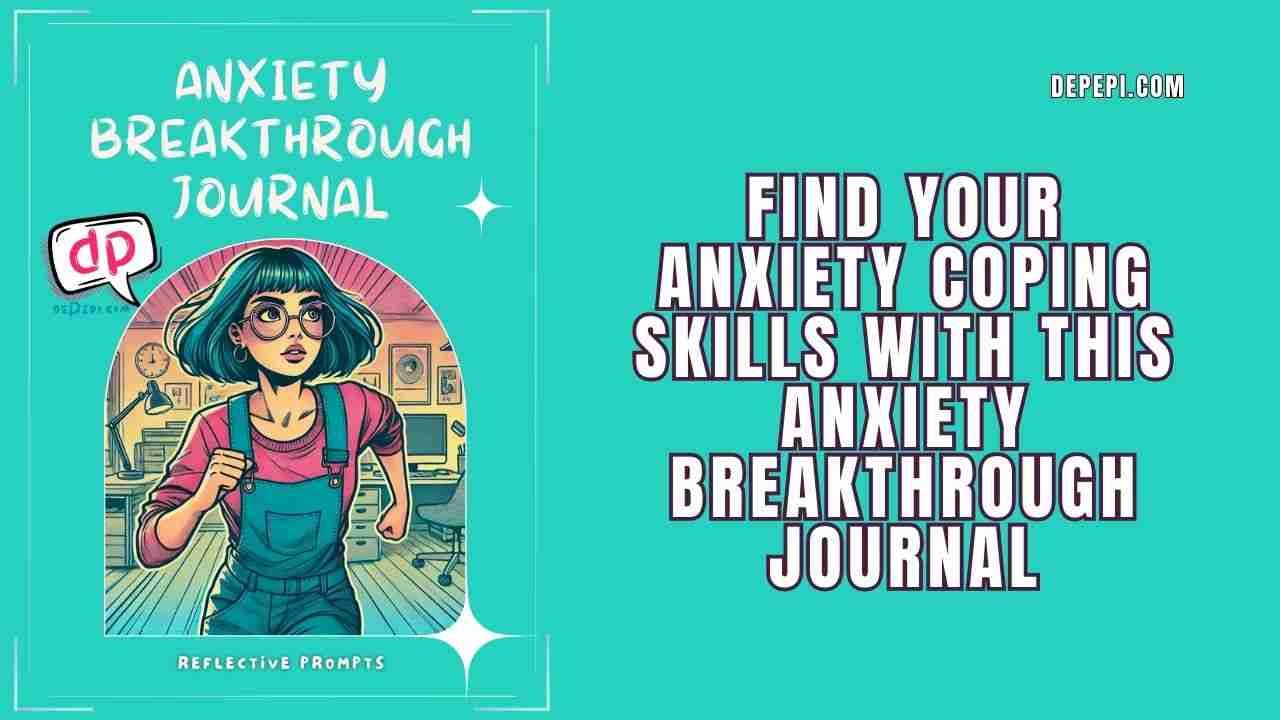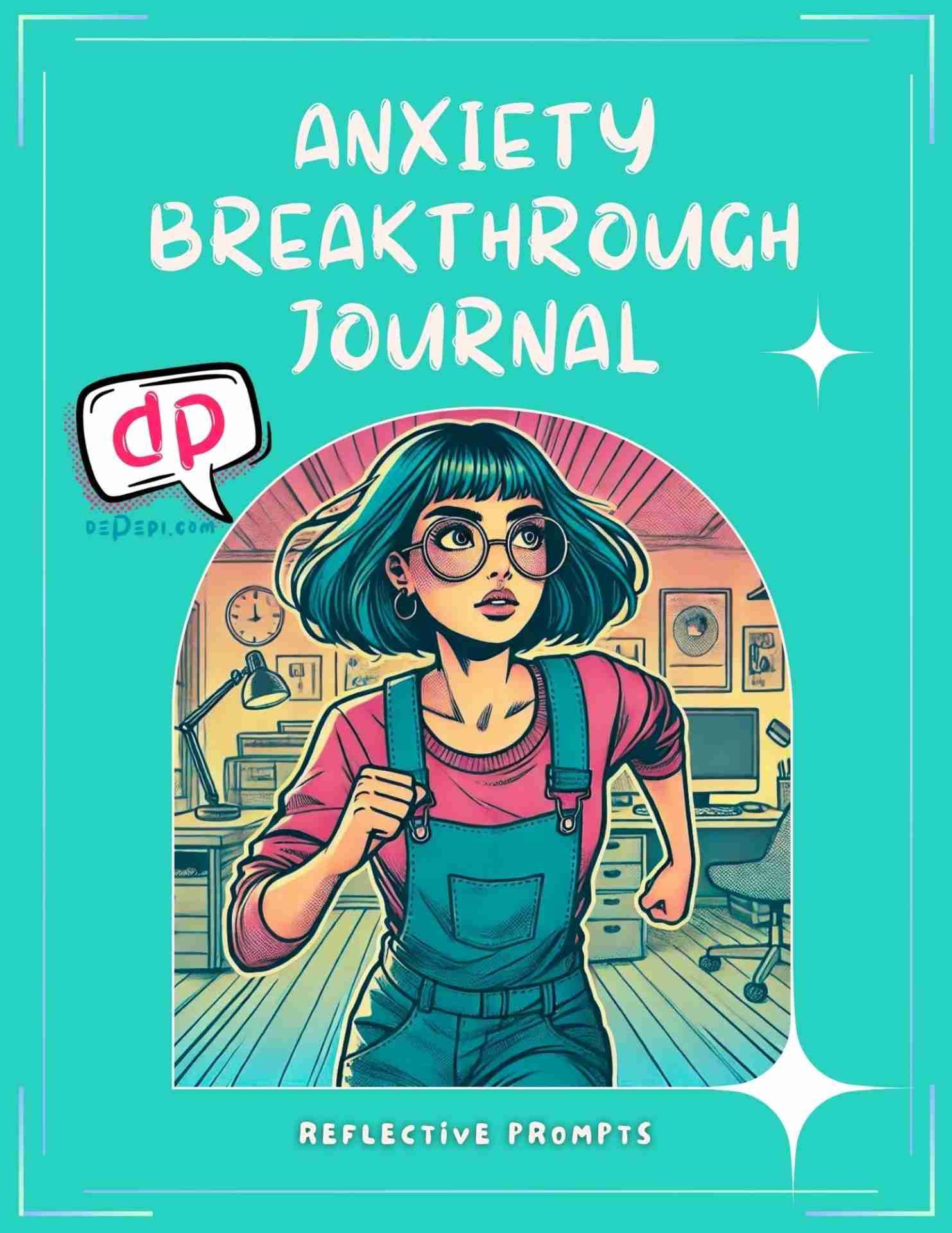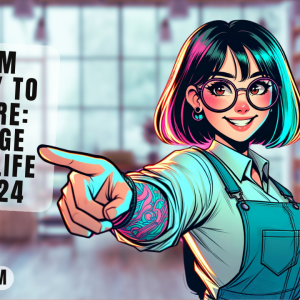Anxiety Coping Skills: Finding Your Inner Strength (Journal)

Living with anxiety is like carrying an invisible weight. Finding your own anxiety coping skills is the best way to notice when anxiety hits and how to deal with it. Some days, anxiety is barely noticeable, just a slight discomfort in the background. Other days, it’s a heavy burden, demanding every ounce of your energy just to move forward. If you’re reading this, you probably know the feeling—and maybe, like me, you’re seeking ways to lighten that load.
Finding My Anxiety Coping Skills: Headspace and Journaling
First, let me clarify: I’m not a therapist. My experiences with anxiety have led me to explore tools like meditation apps and reflective journaling, but everything I share here is rooted in personal experience, not professional advice. For me, managing anxiety is a journey of trying different things—some that work, some that don’t—and slowly finding the best tools for my mental well-being. I often use the Headspace app for meditation. It’s great for helping me center myself and calm my thoughts when anxiety starts to bubble up. But recently, I’ve found a deep connection with a different tool—journaling.
If you’re on the annual and founders’ subscriptions through dePepi’s substack, you’ll get access to my free Anxiety Breakthrough Journal. It can help you recognize triggers, chart emotional patterns, and find coping strategies that resonate with you.
Identifying Triggers and Coping Mechanisms
The Anxiety Breakthrough Journal begins with something that might seem simple but is crucial—understanding what sparks anxiety. Finding your own anxiety coping skills means that you need to understand what’s triggering you first. Week one dives into identifying common anxiety triggers. It can be easy to overlook the small things that cause stress, like unexpected loud noises or caffeine intake, but writing them down makes them real and recognizable.
I had to go little by little with this step because I wasn’t able to recognize all the triggers that made my anxiety go wild. Be kind to yourself. Don’t try to rush! If you need two weeks to understand your triggers (or a month), that’s okay.
Navigating the Emotional Landscape
After finding the external triggers that cause anxiety to appear, we move inwards and explore our emotions. Anxiety is not a simple, single emotion; it’s a complex mix of feelings like fear, insecurity, and hopelessness. This journal helps you recognize these emotions not as obstacles but as messages. This part of the journey is about embracing emotions as guides to better understanding ourselves.
One thing that helped me deal with anxiety was remembering that I’m not my emotions, and as such, they don’t rule me. This simple affirmation helps me calm down when I feel like there’s too much going on. Affirmations to help with my emotions are part of my anxiety coping skills.
Reframing Negative Thoughts
Week three is where the hard work truly begins—challenging the negative thought patterns that often contribute to anxiety. The journal introduces some common cognitive distortions, such as catastrophizing (always expecting the worst) or personalization (taking responsibility for things beyond our control). I identified with many of these patterns. I tend to feel responsible for things that are not my responsibility, and that causes me to catastrophize! It’s a very crippling feeling; however, thanks to understanding my triggers and emotions involved, it’s been easier to take steps to reframe those.
I would flip the script. Instead of thinking, “I’m always going to feel this way,” I learned to write down a more balanced response: “I’m feeling anxious right now, but this is temporary and a bit out of proportion.” Flipping the script and writing it down makes the new, healthier thought more real and gives it more weight in my mind.
Listening to Your Body
Finally, in week four, the journal focuses on the physical aspect of anxiety. Anxiety is not just mental; it has real, physical manifestations—like a racing heart, tightness in the chest, or an unsettled stomach. In my case, that includes dizziness and tension migraines. These physical sensations are signals from your body.
When I experience triggers and tension migraines, I ground myself by doing exercises like holding something cold or focusing on my breathing. These simple actions create a sense of stability when my body feels out of control. The journal helped me see my body’s reactions not as things to fear but as messages, similar to my emotions, pointing me to what I need—maybe rest, movement, or simply a moment to breathe.
Using the Journal in Daily Life
I know firsthand that working through anxiety is not about a quick fix. It’s not like there’s a moment when everything suddenly feels better. But the practice of daily reflection—of asking myself where my anxiety is coming from and what I can do about it—has brought more calm into my life. Some days, it’s about using the Headspace app to meditate for 10 minutes. On other days, it’s also about sitting with the journal, untangling my thoughts, and finding clarity in my fears.
The journal doesn’t pretend to be a replacement for therapy or professional help. Instead, it’s a supportive guide for when I’m alone with my thoughts, trying to make sense of them. It’s a reminder that every small step—whether it’s writing down a thought, taking a deep breath, or finding compassion for myself—is a step towards greater peace and resilience.
Creating Your Own Path to Manage Anxiety
If you’re dealing with anxiety, I hope that sharing my experience helps you feel less alone. It’s not easy. Anxiety can feel like an overwhelming force, but you can find your own anxiety coping skills and apply them when needed.
This journal is included in the annual and founders’ subscriptions on dePepi. It has 64 pages and a cute design. It helps you during four weeks. The journal is yours to keep, and you can print it as many times as you want.






